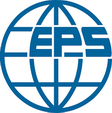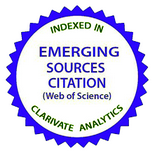Адсорбенти в ядерній криміналістиці (Огляд)
DOI:
https://doi.org/10.15330/pcss.25.4.723-735Ключові слова:
Радіонукліди, адсорбенти, радіоактивні джерела, адсорбція, датування, ядерна криміналістикаАнотація
У даній роботі зроблено огляд радіохімічних способів виготовлення радіоактивних джерел, які продукувались Радянським союзом у період між 1960 та 1990 роками. Зроблено висновок про те, що ідеї найбільш цікавих розробок були запозичені із іноземних наукових журналів. Показано, що синтетичні цеоліти були запропоновані як носії для 90Sr і описані способи виготовлення стронцій-ітрієвих джерел на носіях синтетичних цеолітів. Також зроблено огляд інших стронцій-ітрієвих джерел. Інформація про спосіб виготовлення радіоактивних джерел може бути корисною у ядерно криміналістичній експертизі. Однією із ключових характеристик радіоактивної речовини є дата її виготовлення. У даній роботі дано визначення терміну «дата виготовлення» або “датування” радіоактивних матеріалів чи джерел, наведені формули для розрахунку часу, що пройшов з моменту виробництва даного джерела. Для ефективних розрахунків датування необхідно розділити материнські і дочірні радіонукліди, що містяться у джерелі. Тому у роботі також здійснений короткий огляд сучасних адсорбентів, які можуть бути використані для ефективного розділення радіонуклідів. Серед таких адсорбентів комерційні Dowex 1x8, TEVA, Sr Resin, DGA Resin та дослідні зразки діоксиду титану з унікальними властивостями. Загальний висновок роботи наступний: адсорбенти у ядерній криміналістиці можуть бути як обєктом досліджень, так і необхідним матеріалом для проведення датування невідомих радіоактивних джерел.
Посилання
Z. Varga, M. Wallenius, M. Krachler, N. Rauff-Nisthar, L. Fongaro, A. Knott, A. Nicholl, K. Mayer. Trends and perspectives in Nuclear Forensic Science, TrAC Trends in Analytical Chemistry, 146, 116503 (2022); https://doi.org/10.1016/j.trac.2021.116503.
Development of a national nuclear forensics library: a system for the identification of nuclear or other radioactive material out of regulatory control IAEA, Vienna (2018).
P. Andrew Karam. Radiological Terrorism, Human and Ecological Risk Assessment, 11, 501 (2005); http://www.doi.org/10.1080/10807030590949618.
A. Okubo, N. Shinohara, M. Magara. Uranium age-dating using in-situ isotope ratios by thermal ionization mass spectrometry for nuclear forensics, J. Radioanal. Nucl. Chem., 314, 231 (2017); http://www.doi.org/10.1007/s10967-017-5379-7.
L.Z. Malkin and others. A facility for obtaining thin, homogeneous large-area radioactive sources, Radiochemistry, 6(3), 258 (1964).
M.P. Kochinа and others. Method of preparation of large β-emitters, Radiochemistry, 6(2) 120 (1964).
L.D. Danilov et al. Method of manufacturing radioactive sources of soft X-rays, Radiochemistry, 9(6), 742 (1967).
F.B. Himmelforb. Determination of 226Ra and 90Sr in bioassays enriched with calcium phosphates, Radiochemistry, 11(6) (1969).
V.M. Vdovenko et al. Some Issues of Chromatographic Purification and Fabrication of Transplutonium Element Sources, Radiochemistry. 15 (4) 534 (1973).
J. Korkisch, I. Hazan. Anion-exchange behavior of uranium, thorium, the rare earth and various other elements in hydrochloric acid-organic solvent media, Talanta 11, (8) 1157 (1964); https://doi.org/10.1016/0039-9140(64)80166-1.
Johann. Korkisch, Gustaf. Arrhenius Separation of Uranium, Thorium, and the Rare Earth Elements by Anion Exchange. Anal. Chem., 36(4), 850(1964); https://doi.org/10.1021/ac60210a044.
O. D. Dolmatov et al. Sorption of 90Sr and 45Ca from Titanium (IV) Hydroxide Solutions, Radiochemistry, 13 (5), (1971).
V. I. Levin et al., Production of yttrium-87 and preparation of strontium 87 generator (isomer), Radiochemistry, 14(1), 110 (1972).
V.N. Shchebetkovsky. Investigation of sorption from aqueous solutions of 137Cs, 90Sr, and 91Y by synthetic zeolite X in sodium form. Radiochemistry, 10(2), (1968).
N.E. Brezhnevа et al. Sorption of strontium ions on NaX, NaA, and CaA zeolites, Radiochemistry, 12(4) (1970).
N.E. Brezhnevа et al. Study of ion exchange properties of zeolites toward radioactive rare earth elements, Radiochemistry, 13(3), 411 (1971).
N.B. Chernyavskaya, N.R. Andreeva. Sorption of calcium, strontium, and barium ions by mordenite, Radiochemistry, 15(1), 111 (1973).
N.E. Brezhneva et al. Study of ion-exchange properties of NaY zeolite to radioactive rare earth elements, Radiochemistry, 16(5), 596 (1974).
V.A. Nikashina et al. Study of selective sorption of strontium on various types of artificial zeolites, Radiochemistry, 17(3), 345 (1975).
R.M. Barrer W.M. Meier Structural and Ion sieve properties of a synthetic crystalline exchanger, J.Cem.Soc, 1074 (1955); https://pubs.rsc.org/en/journals/journal/jr?type=archive&issnprint=0368-1769.
R.M. Barrer, D.C.Sammon. Exchange Equilibria in Crystals of Chabazite, J.Cem.Soc, 2838 (1955). https://pubs.rsc.org/en/journals/journal/jr?type=archive&issnprint=0368-1769, https://doi.org/10.1039/JR9590000195.
Contributions of R. M. Barrer to zeolite synthesis, Editor(s): Ruren Xu, Zi Gao, Jiesheng Chen, Wenfu Yan, Studies in Surface Science and Catalysis, Elsevier, 170, 87 (2007); https://doi.org/10.1016/S0167-2991(07)80827-5.
R. M. Barrer, J. W. Baynham, F. W. Bultitude, W. M. Meier. Hydrothermal chemistry of the silicates. Part VIII. Low-temperature crystal growth of aluminosilicates, and some gallium and germanium analogs J. Chem. Soc., 195 (1959).
N.E. Brezhneva et al. Investigation of ion-exchange properties of NaY zeolite concerning uranium, Radiochemistry, 21(4), 524 (1979).
N.E. Brezhneva et al. Regularities of Ion Exchange of Neodymium on NaY Zeolite from Acidic Solutions, Radiochemistry, 22(3), 327 (1980).
Marks, N. A., Carter, D. J., Sassi, M, et al. Chemical evolution via beta decay: a case study in strontium-90. J. Phys.Condens. Matter, 25, 065504 (2013).
B.P. Uberuaga, C. Jiang, C.R. Stanek, K.E. Sickafus, N.A. Marks, D.J. Carter, A.L. Rohl, Implications of transmutation on the defect chemistry in crystalline waste forms, Nuclear Instruments and Methods in Physics Research Section B: Beam Interactions with Materials and Atoms, 268(19), 3261 (2010); https://doi.org/10.1016/j.nimb.2010.06.001.
V. R. van Maris, M. Naji, F. G. Di Lemma, J.-Y. Colle, D. Bykova and R. J. M. Koningsa. The behavior of parent and daughter nuclides in aerosols released in radiological dispersion events: a study of a SrTiO3 source, J. of Raman Spectroscopy, 48(4), 549 (2017); https://www.DOI/org.10.1002/jrs.5076.
Z. Varga, M. Wallenius, K. Mayer. Origin assessment of uranium ore concentrates based on their rare-earth elemental impurity pattern, Radiochimica Acta, 98 (12), 771 (2010); https://doi.org/10.1524/ract.2010.1777.
M. Christl, N. Guérin, M. Totland, A. Gagné, Z. Kazi, S. Burrell, H.-A. Synal A novel chronometry technique for dating irradiated uranium fuels using Cm isotopic ratios, J. Radioanal. Nucl. Chem., 322, 1611 (2019); https://doi.org/10.1007/s10967-019-06767-4.
J.M. Rolison, K.C. Treinen, K.C. McHugh, A.M. Gaffney, R.W. Williams. Application of the 226Ra–230Th–234U and 227Ac–231Pa–235U radio chronometers to uranium-certified reference materials, J. Radioanal. Nucl. Chem., 314, 2459 (2017); https://doi.org/10.1007/s10967-017-5619-x.
J. M. Rolison, M. Druce, Q. R. Shollenberger, T. M. Kayzar-Boggs, R. E. Lindvall, J. Wimpenny. Molybdenum isotope compositions of uranium ore concentrate by double spike MC-ICP-MS, Applied Geochemistry, 103, 97 (2019); https://doi.org/10.1016/j.apgeochem.2019.03.001.
K.M. Mackay, R.A. Mackay, W. Henderson, Introduction to modern inorganic chemistry (5th ed., Blackie Academic and professional, and imprint of Chapman and Hall, 2-6 Boundary Row, London, UK (1996).
Giménez, J. Rotger, E. Apellániz, H. Bagán, J. Tent, A. Rigol, A. Tarancón. A new method based on selective fluorescent polymers (PSresin) for the analysis of 90Sr in the presence of 210Pb in environmental samples, Applied Radiation and Isotopes. 199, 110879 (2023); https://doi.org/10.1016/j.apradiso.2023.110879.
A. Torres, I. Giménez, H. Bagán, A. Tarancón. Analysis of isotopes of plutonium in water samples with a PSresin based on aliquat·336, Applied Radiation and Isotopes, 187 110333 (2022); https://doi.org/10.1016/j.apradiso.2022.110333.
Web data. By Minihaa - Own work, CC0, https://commons.wikimedia.org/w/index.php?curid=82878980.
Z. Varga, A. Nicholl, M. Wallenius, K. Mayer. Plutonium age dating (production date measurement) by inductively coupled plasma mass spectrometry, J Radioanal Nucl Chem., 307, 1919 (2016); https://www.doi.org/10.1007/s10967-015-4418-5.
K. Kołacińska, Z. Samczyński, J. Dudek, A. Bojanowska-Czajka, M. Trojanowicz. A comparison study on the use of Dowex 1 and TEVA-resin inthe determination of 99Tc in environmental and nuclear coolant samples in a SIA system with ICP-MS detection, Talanta, 184, 527 (2018); https://doi.org/10.1016/j.talanta.2018.03.034.
J. Tormos, A. Jouve, D. Revy, R. Millan-Gomez, R. Zanon, M.J. Erario, A rapid method for determining strontium-90 in contaminated samples of soil and plant, Journal of Environmental Radioactivity, 27(3), 193 (1995); https://doi.org/10.1016/0265-931X(95)00005-U.
Strontium-89/90 in Water. Analytical Procedure, (2014); available at: https://www.eichrom.com/wp-content/uploads/2018/02/srw01-15_sr-water-vbs.pdf
Web-source: https://www.triskem-international.com/scripts/files/5f461fcf498f45.09101611/sr-resin-0.jpg.
J. L. Steeb, D. G. Graczyk, Y. Tsai, et al., Application of mass spectrometric isotope dilution methodology for 90Sr age-dating with measurements by thermal-ionization and inductively coupled plasma mass spectrometry J. Anal. At. Spectrom., 28, 1493 (2013); https://pubs.rsc.org/en/journals/journal/ja.
E. Philip Horwitz, Daniel R. McAlister, Anil H. Thakkar. Synergistic enhancement of the extraction of trivalent lanthanides and actinides by tetra-(n-octyl) diglycolamide from chloride media, Solvent extraction and ion exchange, 26(1), (2008) https://doi.org/10.1080/07366290701779423.
R. McLain, Y. Tsai, D. G. Graczyk, J. L. Canaday, J. L. Steeb. An Alternative Separation Procedure for Sr-90 Age Dating Using DGA Resin, Journal of Radioanalytical and Nuclear Chemistry, 317, 1439 (2018).
M. J. O’Hara, N. J. Murray, J. C. Carter, C. M. Kellogg, J. M. Link. Tandem column isolation of zirconium-89 from cyclotron-bombarded yttrium targets using an automated fluidic platform: Anion exchange to hydroxamate resin columns, Journal of Chromatography A, 1567, 37 (2018); https://doi.org/10.1016/j.chroma.2018.06.035 у.
W. E. Meijs, J. D.M. Herscheid, H. J. Haisma, R. Wijbrandts, F. van Langevelde, P. J. Van Leuffen, R. Mooy, H. M. Pinedo. Production of highly pure no-carrier added 89Zr for the labeling of antibodies with a positron emitter, Applied Radiation and Isotopes, 45(12), 1143 (1994); https://doi.org/10.1016/0969-8043(94)90029-9.
G.W. Severin, J.W.Engle, T.E. Barnhart, R.J. Nickles. 89Zr radiochemistry for positron emission tomography, Med Chem., 389 (2011); https://www.doi.org/10.2174/157340611796799186.
J. M. Link, K. A. Krohn, M. J. O'Hara. A simple thick target for the production of 89Zr using an 11MeV cyclotron, Applied Radiation and Isotopes, 122, 211 (2017); https://doi.org/10.1016/j.apradiso.2017.01.037.
J.P. Holland, V. Divilov, N.H. Bander, P.M. Smith-Jones, S.M. Larson, J.S. Lewis. 89Zr-DFO-J591 for ImmunoPET of Prostate-Specific Membrane Antigen Expression In Vivo, The Journal of Nuclear Medicine, 51 1293 (2010).
H. Vasylyeva, I. Mironyuk, I. Mykytyn, M. Strilchuk., et al. A new way to ensure selective zirconium ion adsorption, Radiochimica Acta, 109(12), 000010151520211083 (2021); https://doi.org/10.1515/ract-2021-1083.
H. Vasylyeva, I. Mironyuk, I. Mykytyn, M. Strilchuk., et al. Application of Titanium Dioxide for Zirconium Ions Adsorption and Separation from a Multicomponent Mixture, Physics and Chemistry of Solid State, 3, 460 (2021); https://doi.org/10.15330/pcss.22.3.460-469.
Sh. Chen, J. Yan, J. Li, Y. Zhang, D. Lu. Solid phase extraction with titanium dioxide nanofibers combined with dispersive liquid-liquid microextraction for speciation of thallium before electrothermal vaporization ICP-MS. Microchim Acta, 184, 2797 (2017); https://www.doi.org/10.1007/s00604-017-2309-x.
Y. Zhang, S. Chen, X. Guo, D. Lu. Solid Phase Extraction of Mn, Co, Cr, Zn, and Pb on Titanium Dioxide Nanotubes for Their Determination by Inductively Coupled Plasma MassSpectrometry, Atomic Spectroscopy, 35(6), (2014) https://www.doi,org/10.46770/AS.2014.06.001.
H. Hu, Y. Lin, Y. Hang Hu, Synthesis, structures and applications of single component core-shell structured TiO2: A review, Chemical Engineering Journal, 375, 122029 (2019); https://doi.org/10.1016/j.cej.2019.122029.
J. Paajanen, L. Pettilä, S. Lönnrot, M. Heikkilä, T. Hatanpää, M. Ritala, R. Koivula. Electroblown titanium dioxide and titanium dioxide/silicon dioxide submicron fibers with and without titania nanorod layer for strontium(II) uptake, Chemical Engineering Journal Advances, 13, 100434 (2023); https://doi.org/10.1016/j.ceja.2022.100434.
B. Bejaoui Kefi, I. Bouchmila, P. Martin, N. M’Hamdi. Titanium Dioxide Nanotubes as Solid-Phase Extraction Adsorbent for the Determination of Copper in Natural Water Samples Materials, 15(3), 822 (2022); https://doi.org/10.3390/ma15030822
I. Mironyuk, T. Tatarchuk, Mu. Naushad, H. Vasylyeva, I. Mykytyn. Highly efficient adsorption of strontium ions by carbonated mesoporous TiO2, Journal of Molecular Liquids, 285, 742 (2019); https://doi.org/10.1016/j.molliq.2019.04.111.
I. Mironyuk, T. Tatarchuk, V. Gun’ko, H. Vasylyeva, I. Mykytyn. Effects of chemosorbed arsenate groups on the mesoporous titania morphology and enhanced adsorption properties towards Sr (II) cations, Journal of Molecular Liquids, 282, 587 (2019); https://doi.org/10.1016/j.molliq.2019.03.026.
I. Mironyuk, T. Tatarchuk, Mu. Naushad, H. Vasylyeva, I. Mykytyn. Adsorption of Sr (II) cations onto phosphate mesoporous titanium dioxide: Mechanism, isotherm and kinetics studies, Journal of Environmental Chemical Engineering, 7(6), 103430 (2019); https://doi.org/10.1016/j.jece.2019.103430.
I. Mironyuk, H. Vasylyeva, I. Mykytyn, Kh. Savka. Sodium-modified mesoporous TiO2: Sol-gel synthesis, characterization and adsorption activity toward heavy metal cations, Journal of Molecular Liquids, 316, 113840 (2020); https://doi.org/10.1016/j.molliq.2020.113840.
H. Vasylyeva, I. Mironyuk, M. Strilchuk, K. Mayer, L. Dallas, M. Grygorenko, V.Tryshyn, et al. Age dating of liquid 90Sr–90Y sources, Applied Radiation and Isotopes, 200, 110906 (2023), https://doi.org/10.1016/j.apradiso.2023.110906.
H. Vasylyeva, I. Mironyuk, M. Strilchuk, Age Dating of 90Sr- 90Y β - -Source (May 25, 2023), Available at SSRN: https://ssrn.com/abstract=4458721 or http://dx.doi.org/10.2139/ssrn.4458721.
H. Vasylyeva, I. Mironyuk, M. Strilchuk, et al. Adsorption and possibility of separation of heavy metal cations by strong cation exchange resin, Chemical Physics Impact, 100056. https://doi.org/10.1016/j.chphi.2021.100056.
Ulrike Diebold. The surface science of titanium dioxide, Surface Science Reports, 48(5–8), 53 (2003); https://doi.org/10.1016/S0167-5729(02)00100-0.
##submission.downloads##
Опубліковано
Як цитувати
Номер
Розділ
Ліцензія
Авторське право (c) 2024 Hanna Vasylyeva, Ivan Mironyuk, Igor Mykytyn

Ця робота ліцензованаІз Зазначенням Авторства 3.0 Міжнародна.










